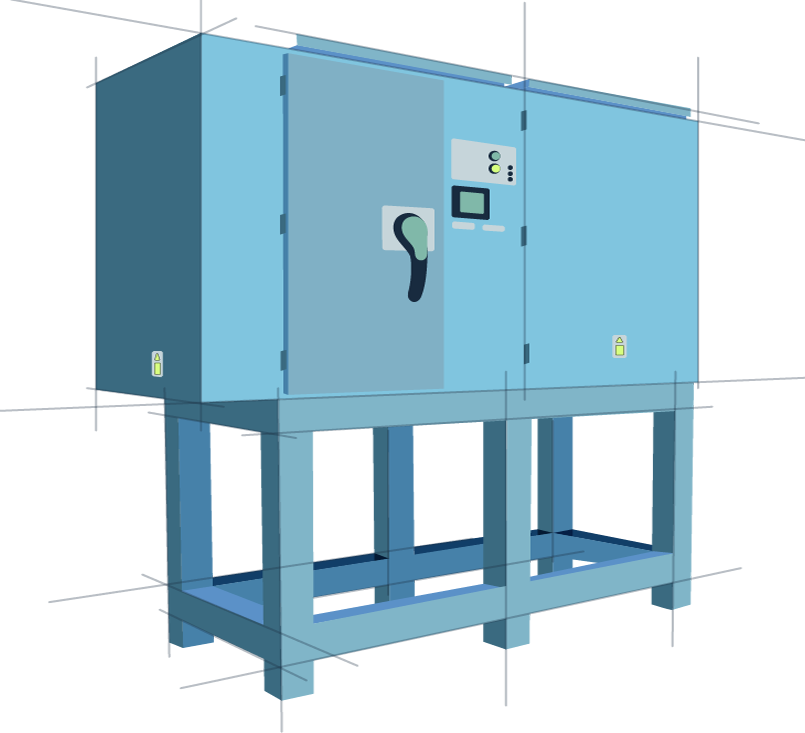WHAT IS VOLTAGE
OPTIMISATION?
High voltage increases consumption, at a higher cost, to your business and our planet. UK electricity is supplied on average at 242 volts. All of our electrical equipment works at 220 volts. This means we are constantly wasting energy, paying for electricity we are not using and needlessly emitting excess carbon. We specialise in energy savings for a wide range of premises. We can combine voltage optimisation with other technologies to provide the highest levels of energy and financial savings possible, dependent on site-specific issues.
VOLTAGE OPTIMISATION SOLUTIONS
We offer three main types of Voltage Optimisers, as well as a range of additional modules for a more comprehensive energy-saving solution. Domestic units are fitted in a morning and begin to make savings straight away; commercial units are generally fitted in a day and bespoke, large-scale industrial systems can take a little longer, but deliver enormous savings.
Eco-Max Commercial
The Eco-max Commercial is designed for business premises and so will be installed wherever the mains supply enters your business property. 3 phase, up to 1200 Amps.
Eco-Max Home
Eco-Max Power
Why Is Voltage Wasted?
UK electricity is supplied on average at 242 volts. All of our electrical equipment works at 220 volts. This means we are constantly wasting energy, paying for electricity we are not using and needlessly emitting excess carbon. Where incoming voltage is more than 234V there is potential financial saving of 8% – 19%
Our guarantee offers the ultimate reassurance that you will make the savings we predict. If you don’t – then we make up the shortfall. In truth our customers always have achieved what we predict and most have realised larger benefits.
SAVINGS AT HOME
+ Details
SAVINGS IN RETAIL
+ Details
LARGE SCALE SAVINGS
+ Details
We have published a series of Case studies to illustrate the success some of our customers have achieved.
Not sure why your electricity bill is so high? Wondering what you can do about it?
Running a business today is a balancing act of keeping costs low whilst maximising income. As business owners, we rely on our service providers to offer us a good deal. Thanks to EC regulations and outdated infrastructures we are often paying far more for electricity than we need to.
Since 1993 all electrical equipment designed for the European market must carry a CE mark. This mark shows that the item will work across the harmonised range 207v – 253v. In the UK electricity is supplied at an average of 242v; a supply which can often be as high as 253v. Critically lots of our equipment works most efficiently at 220v.
Voltage supply without voltage optimisation

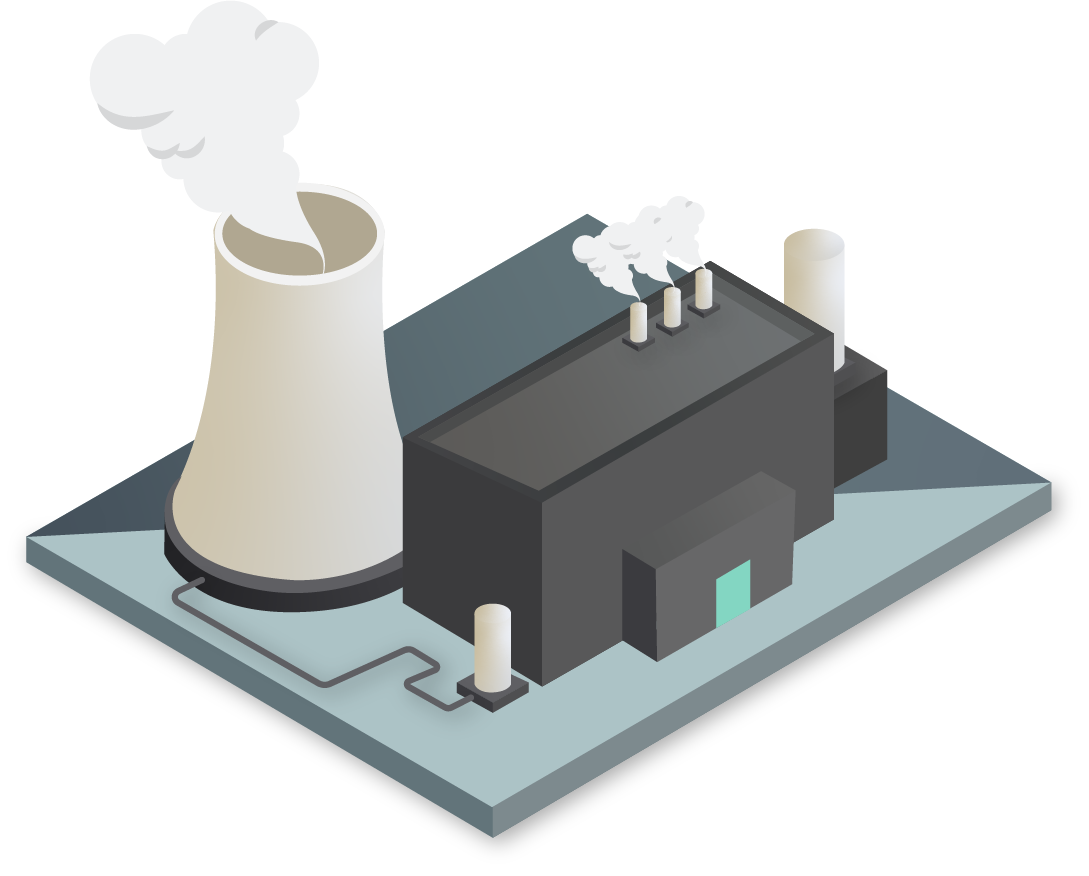
Incoming voltage from the national power grid.

The power is supplied to sites in the UK at 242 volts.

All of our electrical equipment works at 220 volts. The excess voltage damages equipment and wastes energy.

Excessive voltage and energy waste created higher energy bills, and greater carbon emissions
Voltage supply with voltage optimisation

Incoming voltage from the national power grid.
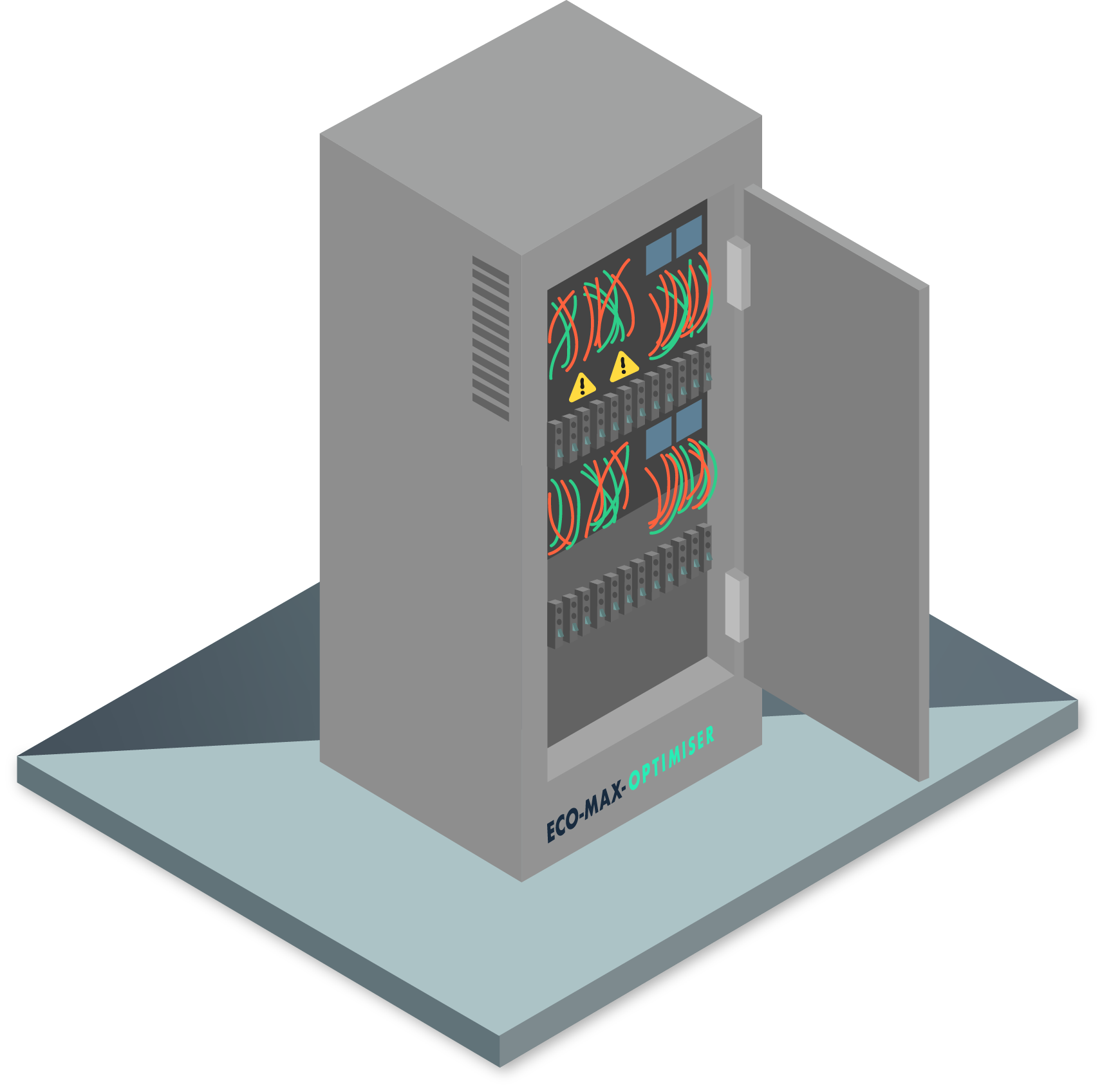
ECO-MAX Voltage Optimiser Installed

POWER SUPPLIED TO SITES AT 220 VOLTS.

Prolonged lifespan reduced costs.

Reduced waste and bills, saving money and energy.
WHAT IS POWER FACTOR CORRECTION
Power Factor is a way of describing how efficiently electrical power is consumed. It is the ratio of Real Power (kW) to Apparent Power (kVA). In an efficient, purely resistive circuit, all of the current delivered to the load is converted to real work (kW).
Why is power lost or wasted?
Many loads in industry today are inefficient inductive types, particularly motors and transformers. This inductance causes the current to lag behind the voltage. Subsequently, reactive currents drawn (kVAr) are used to create the magnetic field needed to operate these machines. Therefore, power is lost or ‘wasted’ in the magnetic field and KW’s are less than kVA’s, and Power Factor is less than 1.
The greater the ratio of inductive loads to resistive loads across your site, the lower the power factor and the higher the reactive charges you will see itemised on your bills. As well as increasing transformer losses (I2R) there is an increased danger of blowing the main fuses because the unnecessary high currents drawn from the supply can exceed the supply capacity.
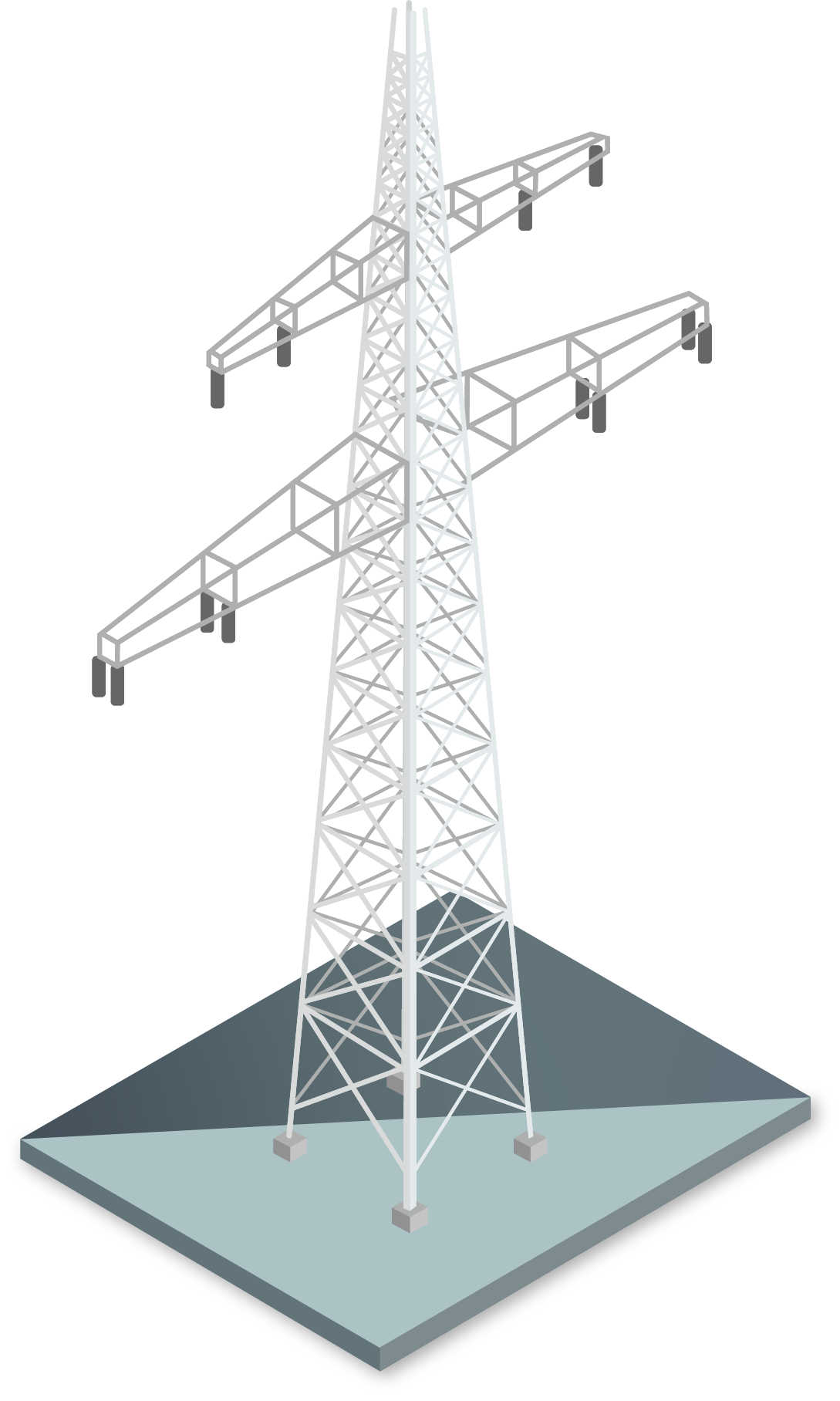

How power factor correction is the calculated?
Power factor correction is the calculated introduction of capacitors to an inefficient system. The capacitors, whether static or automated, reduce current and improve the power factor of a system, bringing it as close to unity as possible. Power factor correction technology increases electrical capacity by reducing the maximum kVA drawn on an electrical system.
Installing Power Factor Correction will reduce your overall power consumption, leading to lower electricity bills and reduced charges. Due to the effects of this power stabilisation, heat reduction, and voltage drop reductions there will be an overall improvement in power quality, resulting in increased life expectancy of electrical equipment. Transformer and distribution losses will also be reduced, leading to an increase in supply capacity.
We have an Eco-Max Power Factor Correction range of solutions, both off the shelf and bespoke and tailored to a specific site’s requirements. Our units are manufactured in the UK, using the highest quality components and sturdy steel powder coated enclosures to prevent corrosion and exposure to harsh environments. They are usually installed at the incoming mains supply to a building, but can be installed on any specific plant equipment with a power factor needing correction.
WHAT IS SURGE PROTECTION?
A surge protective designed to protect electrical devices from voltage spikes. A surge protector attempts to limit the voltage supplied to an electric device by either blocking or shorting to ground any unwanted voltages above a safe threshold.
What at is Surge Protection
Lightning strikes, and other transient surges are the main causes of electrical device failure, down-time and loss of productivity. Protection against these over-voltages should be a fundamental part of our electrical system configurations.
Common causes of electrical surges are:
20% external disturbances e.g. Utility load switching and lightning strikes
80% internal disturbances e.g. load switching, variable frequency drives, lighting and air handlers
It doesn’t have to be a single large surge to cause instant damage to electrical components. There are always many smaller frequent surges on the electrical system that will still cause disruptions in computer signals and processors, and these will degrade component junctions over time causing ‘random’ delayed failure.
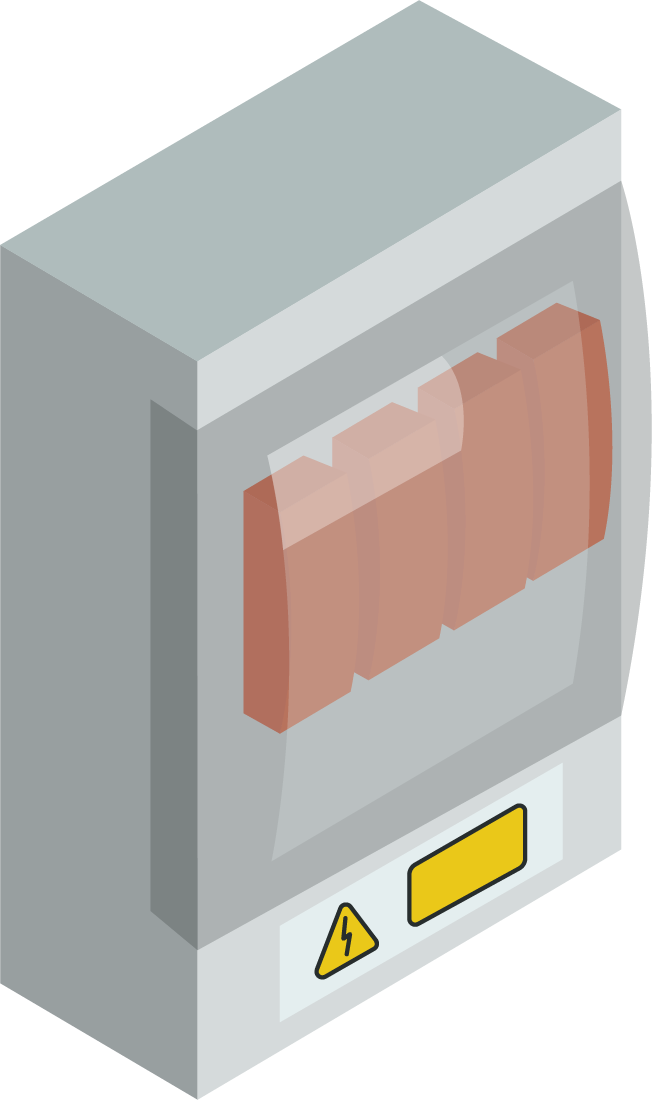

The installation of Surge & Lightning protection which is easily fitted by a qualified electrician:
Avoids installation damages
Prolongs the life span of transformers and sensitive site equipment
Reduces system disturbances
Reduces maintenance costs and equipment replacements
Device Types:
Type 1 device 10/350(µs)
Type 2 device 8/20(µs)
Type 3 device 8/20 1.2/50(µs)
Type 1 device 10/350(µs)
Type 1 device 10/350(µs) should be installed in Lightning Protection Zone 1 (First point of entry into a building off the grid).
Type 2 device 8/20(µs)
Type 2 device 8/20(µs) should be installed in Lightning Protection Zone 2 (sub distribution panel boards) where sensitive electronic equipment and power distribution is critical for the continuation of services.
Type 3 device 8/20 1.2/50(µs)
Type 3 device 8/20 1.2/50(µs) should be installed in Lighting Protection Zone 3 (at the final end circuits) and is critical in preventing damage to items such as file servers, data communication systems, sensitive computer interfaces, CCTV, BMS systems and similar.
We offer a full range of Type 1, Type 2 and Type 3 Lightning & Surge arrestor products including AC and DC versions for solar installations and all available through your local electrical wholesalers.
Need to know more? Want free expert advice?
We specialise in energy savings for a wide range of premises. Reset Eco give free, clear and honest advice to commercial and industrial businesses for the best voltage optimisation solutions.



